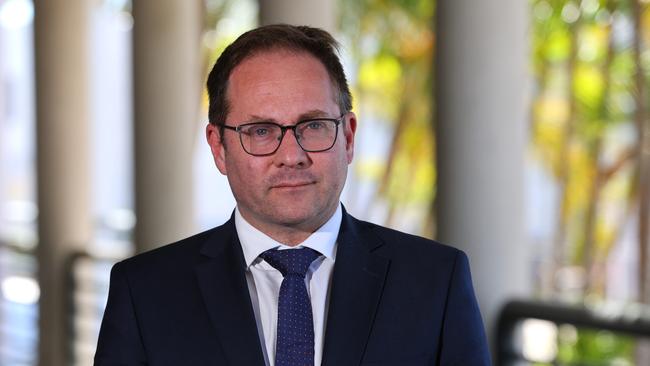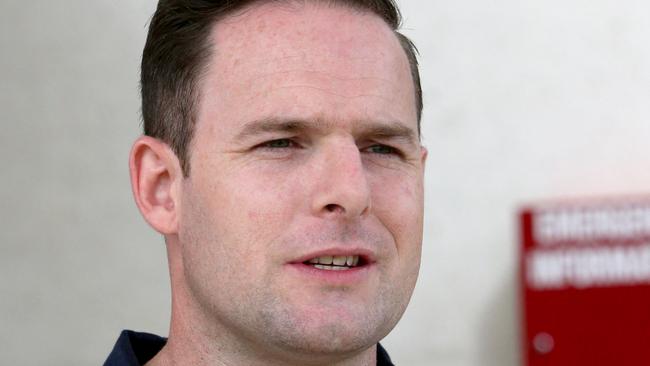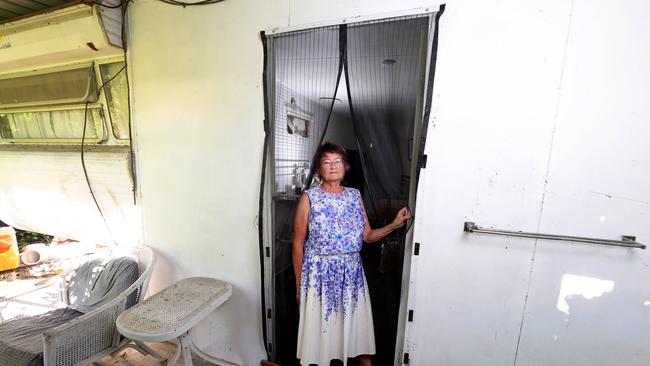Qld 2022 floods inquiry: Price gouging claims as insurance soars
The inquiry into Queensland’s devastating 2022 floods has heard of massive hikes in insurance premiums and claims of price gouging.
QLD Politics
Don't miss out on the headlines from QLD Politics. Followed categories will be added to My News.
The head of a federal inquiry into the devastating 2022 flood event has said that fixing Queensland’s insurance black spots may require a national flood reinsurance pool, as a mayor blatantly called out insurers for “price gouging”.
The parliamentary inquiry into insurers response to the 2022 floods entered its second day of public hearings in Logan on Wednesday, where residents revealed the web of insurance challenges they faced over the past two years including living among sewage and draining their superannuation accounts to pay for emergency accommodation.
Logan City Council Mayor Jon Raven said issues with the insurance industry were “systemic” and not a direct result of the 2022 floods, before calling out insurers for raising premiums to unaffordable levels.
“To blame post-Covid and supply chain issues doesn’t stack up,” he said.
“Increases are not only applied to properties directly impacted by the 2022 flood but also left some residents unable to seek insurance cover.
“(In) one case … insurance rose from $150 a month to $500 a month leaving residents to consider removing their contents insurance altogether.
“There is no other word for this type of price increase and gouging, these are pensioners, they cannot afford that increase to their cost of living.”

Chairing the inquiry, House of Representatives economics committee Daniel Mulino MP said with the insurance industry now moving towards a system where less properties are offered flood coverage, the government may have to consider “other mechanisms” like the reinsurance pool concept developed for cyclone victims.
“The way that it’s been dealt with in Australia over the last 10 to 20 years is through flood opt out, where a lot of those folks have only been able to get insurance through opt out policies where they’re covered for everything but flood,” he said.
“If we see the insurance industry move towards a system where less and less properties are given that option … it does raise the question of whether or not government needs to look at other mechanisms.”
A former insurance contractor, Mr Raven provided a unique insight to the inquiry, revealing insurers were asking for concrete costings from builders months in advance to avoid blowouts.
He said contractors were “adding zeros” to ensure they weren’t stung by cost increases later down the track.
Using hydrologists as an example, a trade often working exclusively for insurers, Mr Raven said insurance companies also needed to engage independent assessors as most contractors “don’t want to bite the hand that feeds them”.

Similar to submissions made by Moreton Bay and Sunshine Coast councils on Tuesday, Mr Raven called for an open data system between government and insurers, industry wide standardisation for flood risk categories and asked for residents to be given the ability to offer additional information about their properties that may help reduce their premiums.
City of Gold Coast general manager Mark Ryan also called for a co-ordinated approach to mitigation and risk definitions, requesting the city be considered for future resilience funding to help bring premiums down for residents impacted by the Christmas Day storms.
“We would welcome financial relief from the insurance industry for those who would take that option,” he said, adding that the council has been “more nervous than ever” during the event.
“We will have to accept that there are events from time to time, particularly back to back events, where we can’t respond quick enough before the next one comes,” he said.
The inquiry heard one of the most glaring issues haunting flood victims was the practice of insurers offering meagre cash settlements, leaving policyholders short-changed and struggling to rebuild their lives.
Linda Fielding, whose home was completely destroyed, told the inquiry she had used “every cent” of her superannuation to secure temporary accommodation for the last two years.
“It’s just put my whole future in jeopardy,” she said.

Insurers were also accused of making unrealistic demands from policyholders, such as providing receipts for contents claims washed away by floods and forcing them to navigate policy documents laden with acronyms and legal jargon. Mr Mulino said insurers needed to invest in their own capabilities, including additional case managers, particularly for vulnerable residents.
“My sense is that in some communities, at least, we probably need to look at more than 3 per cent getting extra assistance, so that’s the question which I think the committee is going to look at and make some recommendations around,” he said.
The inquiry heard tenants found themselves at the mercy of lessors, who often prioritised their claims over the safety and wellbeing of those renting their properties.
Flood Recovery solicitor for Tenants Queensland Emma Webster revealed one mother had resorted to taping her light switches to protect her children from electrical hazards, while other lessors opted for non-liveability termination instead of funding repairs, effectively displacing tenants onto the streets.
Community Plus resilience co-ordinator Melinda McInturff said displaced households were significantly adding to the rental crisis, with at least 100 families still waiting to get back into their homes.
“Because the insurance companies say we’ll pay six months of rent ahead, others who are trying … cant get into the rental market,” she said.
The inquiry continues in Lismore on Thursday.




